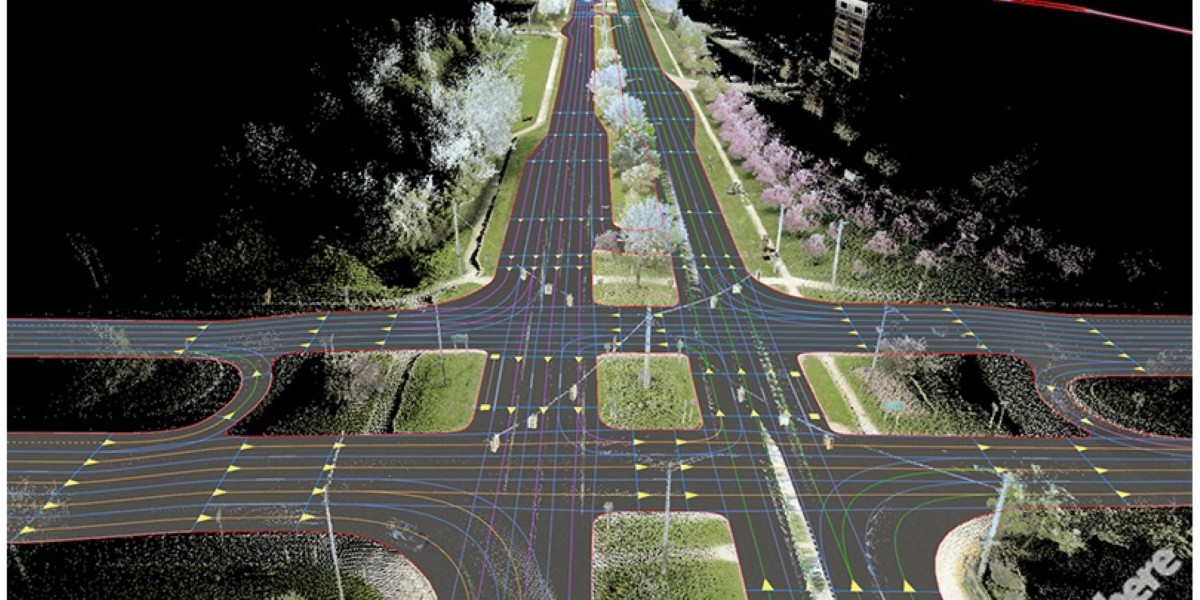HD maps are transforming navigation and autonomous driving with highly detailed and precise geospatial data. Unlike traditional maps, which offer basic road layouts and landmarks, HD maps provide centimeter-level accuracy, including lane markings, traffic signs, elevation changes, and road surface conditions. These maps play a crucial role in smart mobility, enabling self-driving cars and advanced driver-assistance systems (ADAS) to function safely and efficiently. The rise of autonomous vehicles, coupled with advancements in AI and sensor technology, is driving the demand for high-definition mapping solutions.
The primary advantage of HD maps is their ability to enhance vehicle perception and localization. Autonomous cars rely on a combination of sensors, LiDAR, cameras, and GPS to navigate their surroundings. However, real-time environmental conditions such as fog, heavy rain, or obstructions can impact sensor performance. HD maps act as a complementary tool, providing pre-mapped details that allow vehicles to anticipate road features and make informed driving decisions. Companies such as Google, HERE Technologies, TomTom, and NVIDIA are investing heavily in HD map development to support the growing adoption of self-driving technology.
A key aspect of HD maps is real-time updates. Unlike static maps, HD maps leverage cloud computing and connected vehicle networks to continuously update road conditions, construction zones, and traffic changes. This dynamic capability ensures that autonomous systems can adapt to sudden changes, improving safety and efficiency. Additionally, machine learning and AI-driven algorithms are increasingly being integrated into HD mapping systems to enhance accuracy and predictive analysis. As a result, HD maps are not only used in self-driving cars but also in fleet management, logistics, and smart city planning.
The automotive industry is one of the biggest adopters of HD maps. Automakers are collaborating with mapping companies to integrate high-definition maps into next-generation vehicles. Tesla’s Full Self-Driving (FSD) system, Waymo’s autonomous taxis, and General Motors’ Super Cruise all rely on advanced mapping technologies to improve performance. Beyond the automotive sector, industries such as robotics, urban mobility, and augmented reality (AR) are also exploring HD maps for various applications. Delivery drones, automated warehouse systems, and navigation tools for visually impaired individuals benefit from precise mapping data.
Market growth in the HD maps sector is driven by increasing investments in smart mobility and infrastructure digitization. Governments and city planners are adopting digital twin technology, where HD maps create a virtual replica of real-world environments. These digital models assist in urban development, traffic optimization, and emergency response planning. Moreover, 5G connectivity and edge computing are further enhancing the capabilities of HD maps by reducing data transmission latency and enabling instant updates.
Despite their numerous advantages, HD maps also face challenges. Data accuracy, security, and privacy concerns remain key issues. As HD maps require vast amounts of geospatial data, ensuring accuracy and avoiding discrepancies is critical. Additionally, cybersecurity threats pose risks to cloud-based mapping systems, making it essential for developers to implement robust encryption and protection measures. Regulatory policies around data collection and cross-border mapping also impact the global expansion of HD maps.
Read More - https://www.marketresearchfuture.com/reports/hd-maps-market-8737
Looking ahead, the future of HD maps is promising. With continuous advancements in AI, real-time data processing, and edge computing, HD maps are expected to become even more precise and efficient. The growing adoption of connected vehicles, smart cities, and automation will further drive innovation in mapping technologies. Companies are also exploring crowd-sourced mapping, where user-generated data enhances real-time updates and scalability. As the demand for intelligent navigation solutions rises, HD maps will remain a crucial component of next-generation mobility ecosystems.







